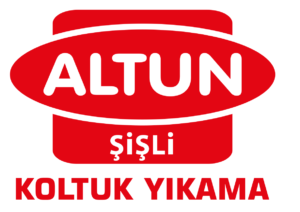Typical Examples of Capitalized Costs Within a Company

Training accounting staff and managers on esoteric and often complex systems takes time and effort, and mistakes may be made early on. Higher-skilled accountants and auditors are likely to charge more for their services when evaluating a cost-accounting system than a standardized one like GAAP. To illustrate this, assume a company produces both trinkets and widgets. The trinkets are very labor-intensive and require quite a bit of hands-on effort from the production staff.
- Common labor costs that you are capitalized include architects and construction contractors.
- They are capitalized to inventory because when a product is in the process of being manufactured, work in process costs are being incurred and value is added throughout the process, not all at once.
- Since inventories are recorded as assets for the manufacturers, product costs are recorded on the balance sheet in the assets section under inventories.
- If you’re using the wrong credit or debit card, it could be costing you serious money.
- Business owners who do their small business bookkeeping need to know period cost accounting in order to write off their business expenses correctly.
- The product costs are the costs incurred by a company directly related to the production of goods.
However, certain labor is allowed to be capitalized and spread out over time. This is typically labor that is identified as directly related to the construction, assembly, installation, or maintenance of capitalized assets. This essentially attaches that specific labor expense with the capitalized asset itself.
Period Costs: What Small Businesses Need to Know
Whether the calculation is for forecasting or reporting affects the appropriate methodology as well. Production costs are usually part of the variable costs of business because the amount spent will vary in proportion to the amount produced. That would depend on whether the depreciation is on property and equipment related to the manufacturing process or not. Say that a company purchases a large machine to add to an assembly line with a sticker price of $1 million.

Salary can be both a product cost and a period cost depending on the activities of the worker. Salary paid for the production floor manager is classified as a product cost since the cost is incurred for actual production of the product. Salary paid to an executive is a period cost, since the executive does not work directly on product production. The concept of product vs period costs is a subset of cost accounting.
Get the Facts on Period Costs, From Definition to Examples and More – Act Now!
Product costs are all costs involved in the acquisition or manufacturing of a product. Product costs become part of cost of goods sold once the product is sold. The most common of these costs are direct materials, direct labor, and manufacturing overhead. Inventoriable costs are all costs of a product that are considered assets when the costs are incurred and are expensed as cost of goods sold once the product is sold. These costs are different from period costs because these costs are initially capitalized to inventory. They are capitalized to inventory because when a product is in the process of being manufactured, work in process costs are being incurred and value is added throughout the process, not all at once.
This indicates the accounting period is the month (June), although the entity may also wish to aggregate accounting data by quarter (April through June), half year (January through June), or an entire fiscal year. An accounting period is an established range of time during which accounting functions are performed, aggregated, and analyzed. An accounting period may consist of weeks, months, quarters, calendar years, or fiscal years. The accounting period is useful in investing because potential shareholders analyze a company’s performance through its financial statements, which are based on a fixed accounting period. Overhead, or the costs to keep the lights on, so to speak, such as utility bills, insurance, and rent, are not directly related to production.
How to Identify a Period Cost
Business owners who do their small business bookkeeping need to know period cost accounting in order to write off their business expenses correctly. Bringing an understanding of period and product costs to a value chain or break-even analysis helps you quickly identify what types of expenses are hampering your business’s profitability. The product costs are the costs incurred by a company directly related to the production of goods.
- The costs in the initial inventory are moved out in a lump sum under FIFO costing.
- These costs include direct materials, direct labor, and factory overhead.
- Since they can’t be traced to products and services, we attribute them to the period in which they were incurred.
- Failing to distinguish between product vs period costs could result in an overstatement or understatement of assets and net income.
If the cost isn’t traceable and allocable to products and services, this cost is a period cost. Period costs are essential to business operations but don’t directly affect the final products. To continue our bakery example, let’s say we’re hiring an external bookkeeper to do the books. When costs are traceable to products and services, they are undeniably product costs.
Cost Accounting vs. Financial Accounting
Reassessing your period costs may assist you in identifying areas where you can save money. Fixed costs are costs that remain constant throughout a specific period of time, regardless of output level. In general, fixed costs include fixed production overhead and administrative overhead. The fixed cost per unit of production will fluctuate inversely with output level variations.
Zoom Video Communications Reports Financial Results for the … – Zoom Investor Relations
Zoom Video Communications Reports Financial Results for the ….
Posted: Mon, 21 Aug 2023 20:06:44 GMT [source]
The federal government has a fiscal year that runs from October 1 to September 30, while many nonprofits have a fiscal year that runs from July 1 to June 30. Product costs are the costs incurred by a business that is directly tied to the manufacturing of goods. If that reporting period is over a fiscal quarter, then the period cost would also be three months. If the accounting period were instead a year, the period cost would encompass 12 months.
This type of analysis can be used by management to gain insight into potentially profitable new products, sales prices to establish for existing products, and the impact of marketing campaigns. For example, cost accountants using ABC might pass out a survey to production-line employees who will then account for the amount of time they spend on different tasks. The costs of these specific activities are only assigned to the goods or services that used the activity. This gives management a better idea of where exactly the time and money are being spent. Traditionally, overhead costs are assigned based on one generic measure, such as machine hours.
Congress’s Innovation-Killing Drug Habit – City Journal
Congress’s Innovation-Killing Drug Habit.
Posted: Wed, 06 Sep 2023 16:23:26 GMT [source]
This company has $3,400,000 in period costs for the fourth quarter from their selling, marketing, and administrative expenses. Their selling expense is from the commission they pay their salespeople. Their administrative costs are from executive salaries and how to calculate annual income professional costs. Items that are not period costs are those costs included in prepaid expenses, such as prepaid rent. Also, costs included in inventory, such as direct labor, direct materials, and manufacturing overhead, are not classified as period costs.
Is depreciation expense considered a period cost?
They are referred to as period costs because they are not assigned to products, and therefore cannot be included in the cost of items held in inventory. The period costs could not be capitalized as they are not directly related to the production of the inventory and hence are charged in the profit and loss statement of the company. The management of the period cost helps the company to prepare better budgeting https://online-accounting.net/ and able the entity to use the increased profit in expanding the business through which the entity will yield more profit. Looking at these expenses the utilities for the manufacturing facility and the production worker’s wages are both product costs because these are manufacturing overhead costs and direct labor costs. Utilities for the retail shop as well as the cashier’s wages are period costs.
